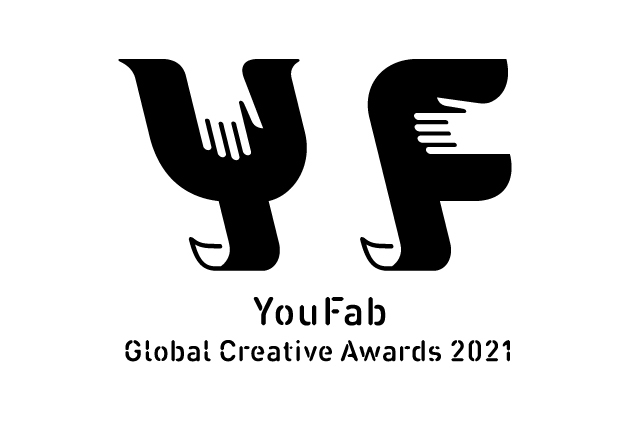The reflective surface
Reflection of natural light
A future development for deaf dancer (read in the special prize section)
Reflection of a projector
-
Work Title
Light-in
-
Work Title(EN)
Light-in
-
Please describe the concept of your artwork in 2000 words.
Playing with humanity's greatest gift to decipher or even give life to non-living objects, Light-in creates a kinetic light reflection that evokes the audience's imagination to interpret the visual form.
The project was first inspired during the corona lockdown. When our living space became everything we had (sleep, eat, work and be inspired) , the lockdown forced us to make a new home from our own home. Most of our homes are based on rectangular walls and cielings, with rectangular windows. Working in this unchangable space, I felt the lack of connection with natural light outdoor. Thus, I tried to break the industrial walls and developed a DIY tool to sweep natural light indoor with organic movements. On the journey, the result reveals itself as a potential tool that is not only useful for our biological condition.
In the psychological field, human interpretation of movements of non-human objects is a valuable resource for analysis and comprehension of human perception. Heider and Simmel (1944) conducted a famous psychological experiment; presenting a moving picture film [1] in which three geometrical figures (a large triangle, a small triangle, and a disc/circle) were shown moving in various directions and at various speeds. They intentionally chose the geometrical figures without faces to prove the argument that configurations are a determinant of interpretation. As a result, their participants described the geometrical figures with human-like characters (i.e. irritable, bully, power-loving). This falls into the specific theory of Anthropomorphism, which describes the tendency to imbue the real or imagined behaviour of nonhuman agents with human-like characteristics, motivations, intentions, or emotions [2].
Inspired by anthropomorphism, I (an artist) finally take a research perspective on the human perception of kinetic light reflection. As the projrct has developed, I overlooked the plain fact that this is just light reflection and started to recognise it as she/her. Light-in has many of her own degrees of freedom, or in other words 'free will'. She takes nature as one element, as she depends on natural light to shine and reflect patterns. Besides, she takes electronic randomness as the second element, as a processing board moves light reflection with random speed, random time, and random interval. In total, Light-in creates a stimulus configuration that provokes the imagination and open interpretation for the audience. At that notice, I took a psychological experiment - taking interpretation of the audience/stakeholders as a part of the artwork. I asked 15 participants (friends and neighbours who were forced to be in the same restricted condition) to describe how they interpret the light reflection: What does it look like and why? And hereby, our human interpretation has truly brought Light to Life.
[1] https://www.youtube.com/watch?v=sx7lBzHH7c8
[2] https://pubmed.ncbi.nlm.nih.gov/17907867/ -
Please describe the concept of your artwork in 2000 words. (EN)
-
Work Specification
- Software: ARDUINO 1.8.13
- Electronic hardware: 4 servos, one breadboard, Arduino UNO, jumper wires, 5V power supply
- Non-electronic hardware: a mirror sheet, acrylic plates (laser cutting), metal wires, nuts and bolts, folded plastic sheets, safety pins, rubber bands, and a site-specific stand
Assembled together, the reflecting object is 17 x 17 x 8 cm³, with a mirror sheet on the top surface. The function of this moving mirror is to reflect light that falls onto it and to reflect the result on a wall - based on the sun direction, and random control. -
Work Specification(EN)
-
Media CoverageURL
https://piyakornko.wixsite.com/franc/light-in
-
Video URL
https://youtu.be/owtSQwW19kI
-
Your OfficialURL (Website, Instagram, Facebook)
https://piyakornko.wixsite.com/franc
-
Please describe how your work relates to the theme of the special prize.
Can you dance without hearing the music? Deaf or hard of hearing dancers could dance perfectly to the music beats, by counting song beats or feeling the beat on an assistive device.
Chris Fonsec [1] and Shaheem [2,3] are two examples of professional hip-hop dancers. They gave dancing classes to deaf and hard of hearing students - because the students feel comfortable learning and staying comfortable within their deaf community. Besides, both Chris and Shaheem revealed their secrets of learning by 'feeling the vibration of the beats', either through putting his hands on a speaker or through the vibration on a cochlear implant. Yet, it is a slow process that needs extremely hard work. Shaheem explained that he needs to do that several times to be able to catch/memorize the beats, then he has to learn the lyrics and start the choreography.
As a researcher with a passion for diverse capabilities and inclusivity, I am developing the project further as an inclusive, ambient technology for creating 'equity' [4]. Under an animated light by a projector and synced movements with song's beats, the reflective surface can create visual cues on music beats; the 5-meter-wide light reflection moves according to bass and drum beats. The reflection could be perceived on a peripheral vision or as a part of the vision that occurs outside the very centre of gaze [5] - which allows dancers to see the song's beats and catch the beats without requiring full focus while dancing. This can be used as a mediate tool, bringing dancers with good hearing and hard of hearing in the same learning space. And it could be a symbol for the intention for inclusivity.
Please see the latest results (of the light reflection syncing with music) in the bottom of this link: https://piyakornko.wixsite.com/franc/light-in. )
[1] https://www.youtube.com/watch?v=S1FV66K8a2k
[2] https://www.youtube.com/watch?v=p0IYSKpADMM
[3] https://www.youtube.com/watch?v=dwqSuvFzDdI
[4] https://onlinepublichealth.gwu.edu/resources/equity-vs-equality/
[5] https://www.sciencedaily.com/terms/peripheral_vision.htm


